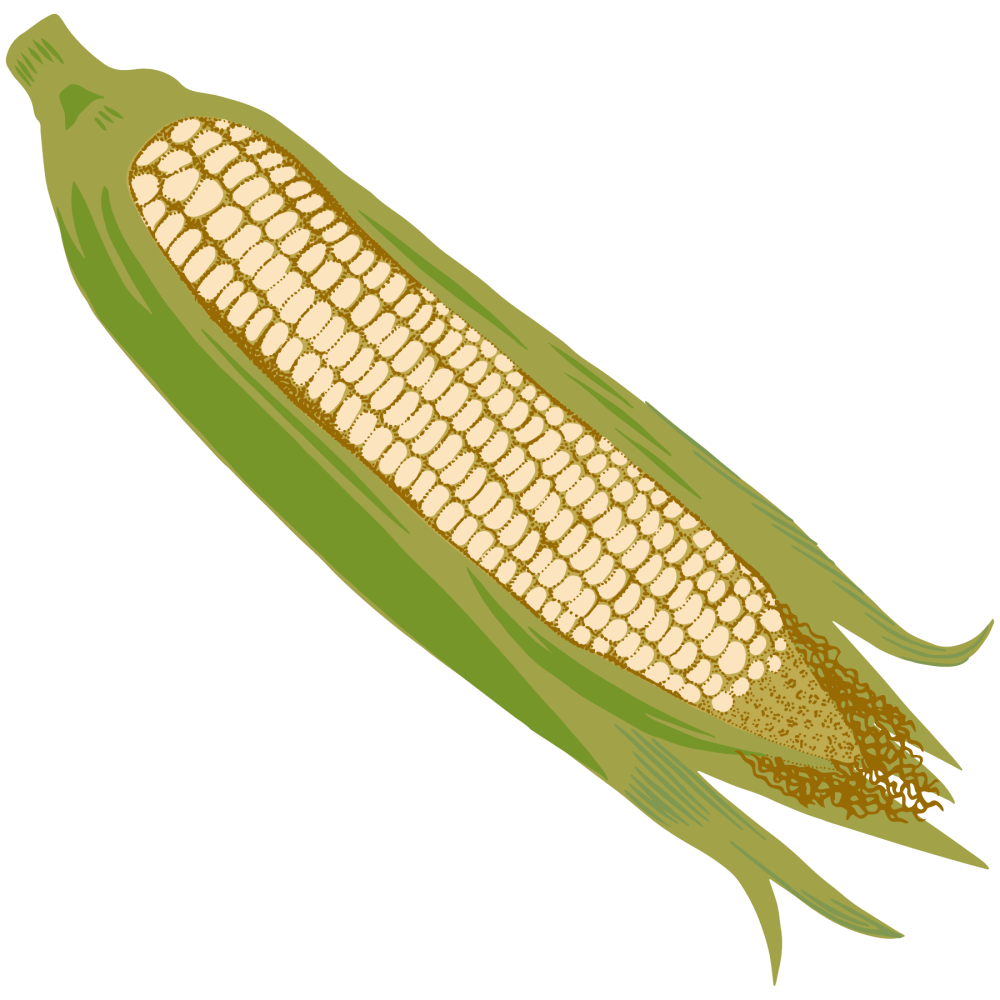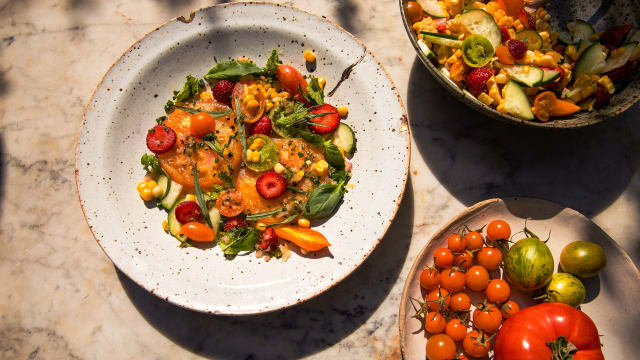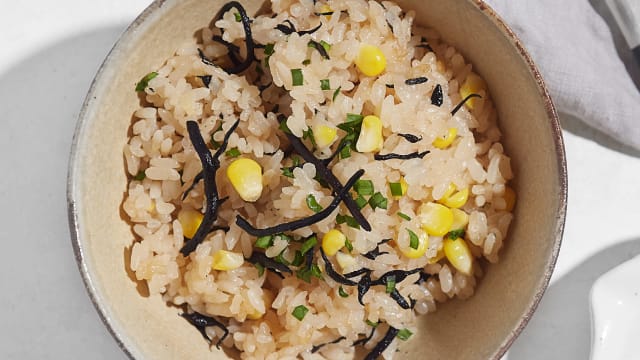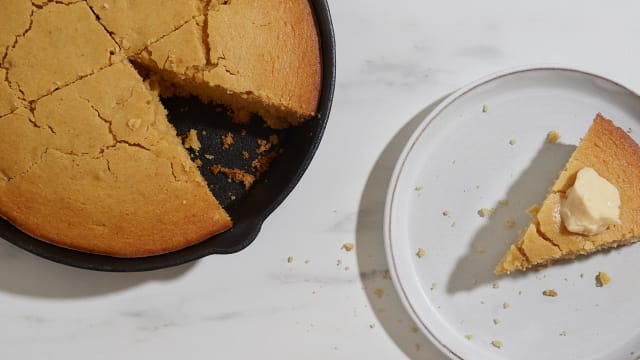Corn

Latin name: Zea mays
Other names: maize
Uses: vegetable, meal/flour, sweetener, alcohol
What is corn?
Like other cereals, corn is a member of the grass family, and by weight it’s the most-grown grain in the entire world. Sweet corn is eaten fresh off the cob, while flint and dent corn are grown for grinding into cornmeal. You can’t throw a rock without hitting corn these days — it’s just not always recognizable as our favorite yellow vegetable with a silky moptop. It’s the primary feed used for livestock, so nearly all meat and eggs are made of corn. Corn-based sweeteners are nearly unavoidable in processed foods, it’s used for biofuel, and new industrial uses for corn are emerging every day. But corn can’t be blamed for its utility — we bred it to be that way.
Why is corn healthy?
Corn’s bright colors — yellow, red, blue, even black — show its rich antioxidant content, compounds known to support immune, eye, and skin health. It also is a good source of vitamin C, magnesium, B vitamins, and fiber. Be sure to purchase organic corn if you can, due to its prevalence as a heavily sprayed GMO crop in North America.
What does corn taste like?
Corn is famous for being sweet, but it has much more going for it. Freshly popped popcorn has a lovely toasty bread flavor. Corn on the cob tastes like a cereal with hints of pandan, and cornmeal products have a distinctive nuttiness.
How do I use corn?
Sweet Corn
Even though you can find corn on the cob year-round, you can’t beat fresh local corn in the summer. Corn on the cob can be shucked to remove the husks and then boiled, or it can be grilled with the husks on; either way, it’s best slathered in butter and sprinkled with salt (or go a step further and use chile, mayo, and cotija cheese to make elotes). Fresh corn is a necessary element of a summer succotash. You can use frozen corn kernels in corn pudding, and corn chowders, or take a cue from Korea and heat it on a sizzling platter with spicy sauce and melted mozzarella as a drinking snack. Be sure to add the cobs to your stock pot.
Cornmeal/Polenta/Grits
Use cornmeal for baking cornbread or making Johnny cakes and hoe cakes. Cornmeal porridges like pap, grits, and polenta are eaten around the globe and can be cooked somewhat interchangeably. Cheesy grits are a Southern comfort, but try congee made with coarse grits instead of rice sometime — just add a poached egg, some scallions, and a dribble of chile oil to make it complete breakfast. Though it’s a pantry staple throughout Mexico, the American South, northern Italy, and the entire African continent, cornmeal goes rancid quickly because of its high fat content. Store it in an airtight container in the freezer to extend its shelf life.
Hominy and Masa
Dried corn kernels are often treated with slaked lime in a process called nixtamalization. The resulting product is more nutritious than fresh corn (the process releases niacin and prevents pellagra) and you can use it several ways: ground fresh into a dough for making tortillas and tamales; canned or dried whole as hominy for adding to rich, brothy hangover-curative pozole; dried and ground into masa harina for making tortillas, tamales, and huaraches.
Popcorn
Popcorn is a versatile snack. Try it with salt and butter, or toss it with curry powder, nutritional yeast, parmesan cheese, or togarashi. Mold popcorn into balls with sea-salty caramel for a more decadent treat. The hulls will probably get stuck in your teeth, but it’s worth it.
What does corn pair well with?
Corn loves dairy like butter or cheese, chiles, tomatoes, and fresh herbs.
Where does corn grow?
Corn was first domesticated in Mesoamerica from the wild teosinte grass, and now (9,000 years later) it’s heavily reliant on human help for reproduction. It can’t tolerate cold and has to be replanted every spring. Though it relies on consistent irrigation, corn is more water-efficient than other major crops. Today, the American Midwest and China lead global production.
How to buy corn:
Fresh sweet corn is only truly good when it’s in season and local. Look for firm green husks with bright, silky tassels and plump kernels.
Fun corn fact:
Corn is susceptible to a fungal infection called corn smut, also known as huitlacoche. A delicacy throughout Mexico and beyond, the fungus is high in the essential amino acid lysine, cholesterol-reducing beta glucen, and contains more protein than most other edible fungi.





